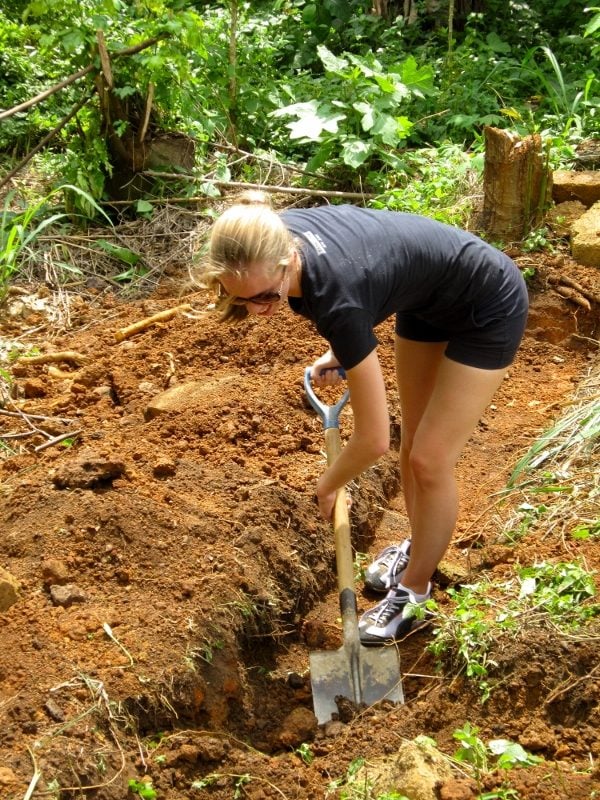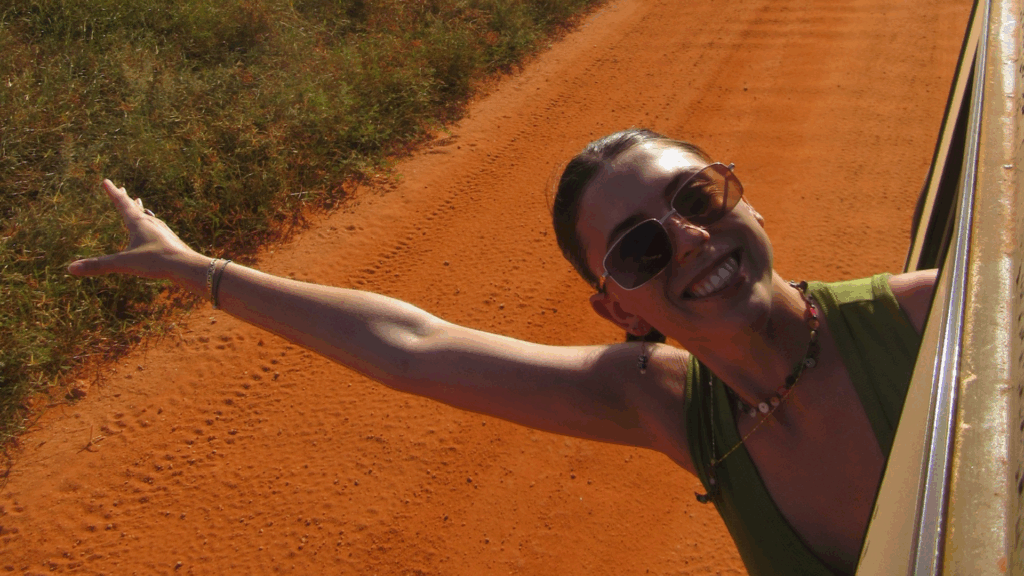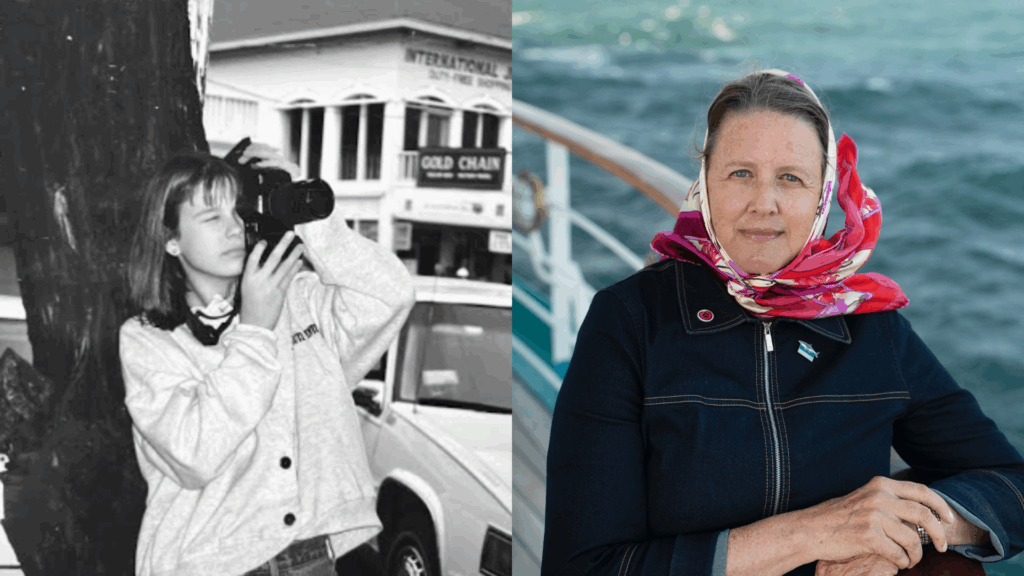
By: Rebecca Dickinson, Communications Team Work Study Student
Jacksonville, Florida, USA; Accra, Ghana and Cape Town, South Africa. – These are cities where I have volunteered with Habitat for Humanity in the past year. Semester at Sea gave me the opportunity to experience Habitat work in a global perspective by working in Ghana and South Africa. The conditions of the work site in each country were strikingly different. Despite the challenges at some of the sites the hard-work and diligence overcame these conditions.
1. Building Materials
In Florida, we built the house using wood beams, nails, glass windows and shingles – everything a standard home in the United States would have. The materials in Ghana were shocking after coming from the U.S.; we used dirt bricks dried in the sun. A student volunteer, Adam Vincent, said he was surprised they only made 60 bricks in a few hours. South Africa was less striking; they had cement bricks and sand mortar for the walls, and wood and metal for the window and door frames.
2. Neighborhood
The work site in Florida was in an inner-city neighborhood with quite a few rundown houses, but it was nothing in contrast to Ghana. The building site in Ghana was a rural village in the forest, with no access but a rugged dirt road. In South Africa, Apartheid caused segregation by race into small sections of the country called townships. Most of the township occupants live in rundown homes with poor sanitation. A student volunteer, Monica Mina, said that she met the future owner of the three-bedroom house we were building, Nitomley. She will live in the house with her husband and five children, three of whom are her deceased sisters’ children.
3. Work
The volunteers’ jobs in Florida consisted of painting, hammering, putting up siding and standing on ladders. None of us had construction work experience so we received a crash course in efficiency and safety. The same problem of inexperience existed in Ghana in which some groups dug trenches, others made sun-dried bricks. It was a challenge for many. In South Africa, the work was based on teamwork; we moved building bricks across the lot so they were closer to the workers.
4. Available Tools
In the United States, Habitat provided plenty of tools for the volunteers: hammers, nails, safety glasses, brushes, ladders. Those who knew how to operate them could use power tools like table saws and circular saws. Neither South Africa nor Ghana provided enough tools for everyone, especially not power tools. In Ghana, for one group there were only two shovels, a machete, and two pickaxes one with a loose head, and the group had ten volunteers. Student volunteer Tequilla Manning said she was surprised by this, it was “very admirable especially since they build four houses a year with only these tools.” In South Africa, we had enough tools to do the job effectively.
Working with Habitat in a few different countries was a great learning experience. I will always remember the dedication of the local workers and I hope in the future to volunteer with Habitat in more countries.


